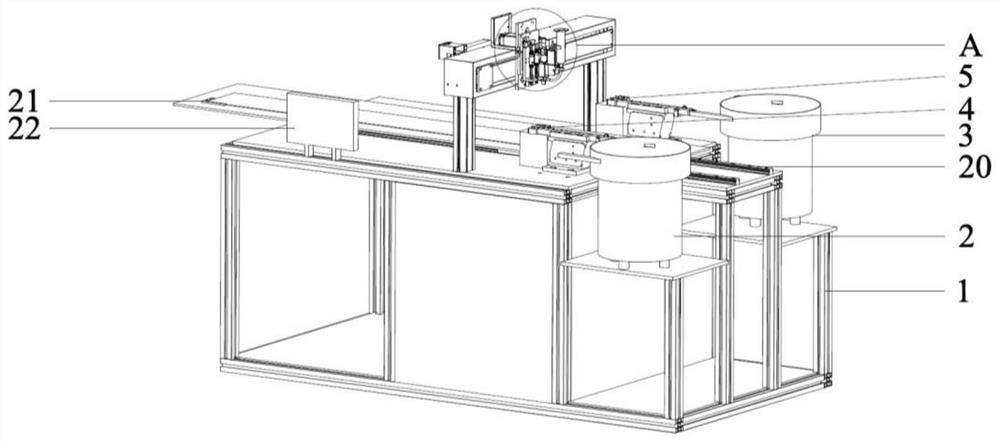Double-end automatic feeding lens placement machine
An automatic feeding and placement machine technology, applied in the direction of conveyor objects, installation, material gluing, etc., can solve the problems of labor consumption, waste, motor speed limit, etc., to reduce the price of the machine, reduce the price, and ensure the accuracy of feeding Effect
- Summary
- Abstract
- Description
- Claims
- Application Information
AI Technical Summary
Problems solved by technology
Method used
Image
Examples
Embodiment Construction
[0028] The following will clearly and completely describe the technical solutions in the embodiments of the present invention with reference to the accompanying drawings in the embodiments of the present invention. Obviously, the described embodiments are only some of the embodiments of the present invention, not all of them. Based on the embodiments of the present invention, all other embodiments obtained by persons of ordinary skill in the art without making creative efforts belong to the protection scope of the present invention.
[0029] Such as Figure 1 to Figure 3A kind of double-head automatic feeding lens placement machine of the present invention as shown, comprises frame 1, and the front part and rear part of frame 1 left side are installed with first vibrating plate 2 and second vibrating plate 3 respectively, and the first vibrating plate The right side of 2 is provided with the first feeding positioning module 4 connected with the first vibrating plate 2, the rig...
PUM
 Login to View More
Login to View More Abstract
Description
Claims
Application Information
 Login to View More
Login to View More - R&D
- Intellectual Property
- Life Sciences
- Materials
- Tech Scout
- Unparalleled Data Quality
- Higher Quality Content
- 60% Fewer Hallucinations
Browse by: Latest US Patents, China's latest patents, Technical Efficacy Thesaurus, Application Domain, Technology Topic, Popular Technical Reports.
© 2025 PatSnap. All rights reserved.Legal|Privacy policy|Modern Slavery Act Transparency Statement|Sitemap|About US| Contact US: help@patsnap.com



